LEARN / ARTICLE
Clean Air at the Office: Just a Benefit or Should It be a Standard?
This post is from a series we started publishing recently on the impact of air pollution on our daily lives. If you haven’t read the previous posts, check them out here:
1) Our Buildings Are Broken
2) How pollution impacts performance at the office
3) How Much Pollution Gets Inside Our Offices?
A Quick Review of Air Quality Data Readings
If you’re new to the air quality space, we’ll quickly review some of the numbers and colors you will see.
Nafas measures concentrations of PM2.5 in the air, which are measured in µg/m3. It means that one cubic meter of air contains one microgram of pollutant. The World Health Organization yearly recommended guideline of PM2.5 exposure for humans is 5 µg/m3. For reference, Jakarta’s average in July 2023 was 47 µg/m3.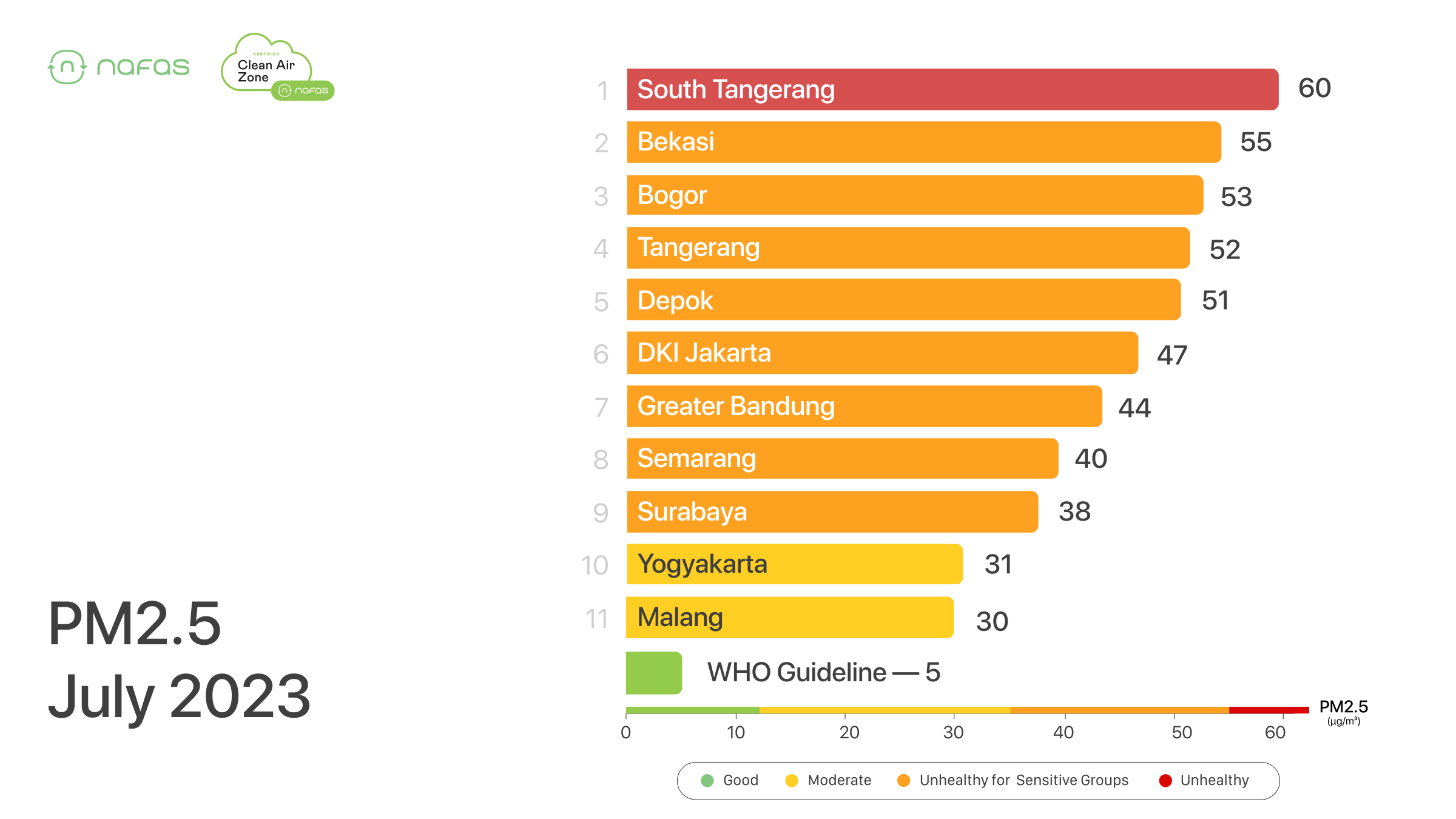
What do the colors mean? Nafas references the US EPA scale for healthy air quality as it is one of the most stringent but also recognized around the world. You can see how the US EPA scale compares to the Indonesian ISPU scale and the Chinese scale below.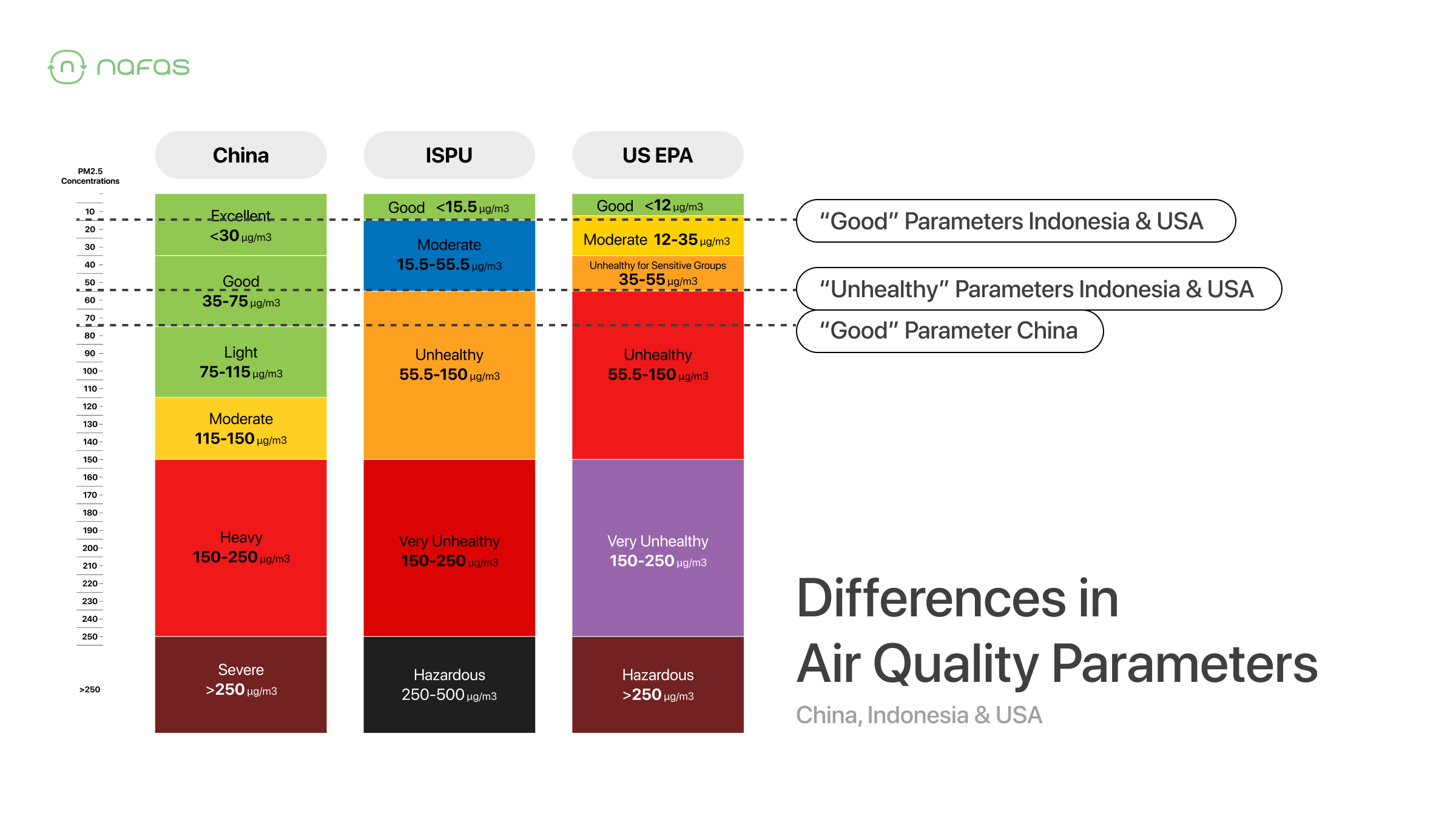
Since you now know how to measure it, to get a better idea of how air pollution impacts our performance in the office let’s first take a look at how it impacts our bodies.
Understanding PM2.5 and its Inflammatory Effects
PM2.5 refers to fine particulate matter with a diameter of 2.5 microns or less. These tiny particles are commonly associated with burning activities, such as the emissions from vehicles, power plants, and even the open waste burning in our neighbourhood. When inhaled, PM2.5 particles can penetrate deep into the lungs and even enter the bloodstream, causing systemic inflammation.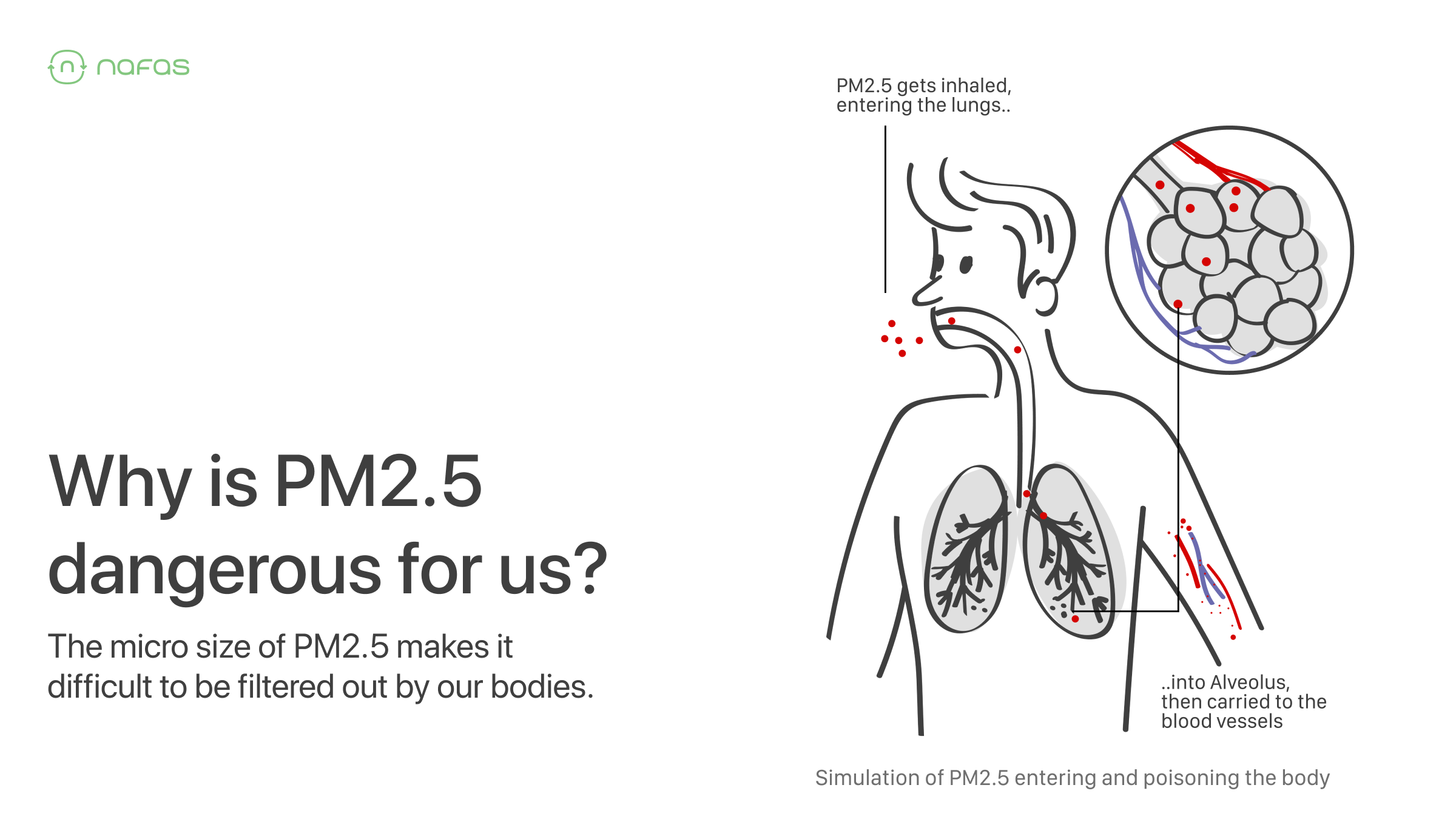
This inflammatory response is triggered by the body's immune system as it recognises the foreign particles and releases pro-inflammatory mediators to combat them. Prolonged exposure to PM2.5 can lead to chronic inflammation, which has been linked to various health problems, including respiratory and cardiovascular diseases
Recent studies from Harvard University and MIT have found that PM2.5 also has significant short term impact, in particular on our respiratory and cognitive performance.
Air quality affects ALL employees at the office
We spend about a third of our working lives at the office, so we try so hard to figure out how to make it a better experience, more comfortable and attractive, a place where people want to spend time away from home.
We invest in better office equipment, interesting designs to encourage interaction, pantries with food and even office toys like football, pingpong, and others.
All of this to make the workplace better, in the hope that people would use all of these investments as part of their day to day lives.
But - there is only ONE item in our offices that has 100% utilisation rate during the workday, and something that we MUST invest in as long as our cities are polluted.
It’s the air that we breathe.
Breathing is so automatic that we tend to forget that it is literally the main thing keeping us alive. Why don’t you try it right now, turn on the time on your phone and hold your breath to see how long you can last. Not even 3 minutes, right?
So why is it the one resource that we don’t invest in?
Why don’t we demand our offices to have clean air while they already have clean water and clean food?
Why don’t we invest in the health of our employees? Not through a gym membership, which realistically barely anyone uses, but the actual environment they work in?
Why do we have to accept that the places we work have basically the same pollution as outside?
Below are several examples from the real indoor air quality inside offices in SCBD and Kuningan area.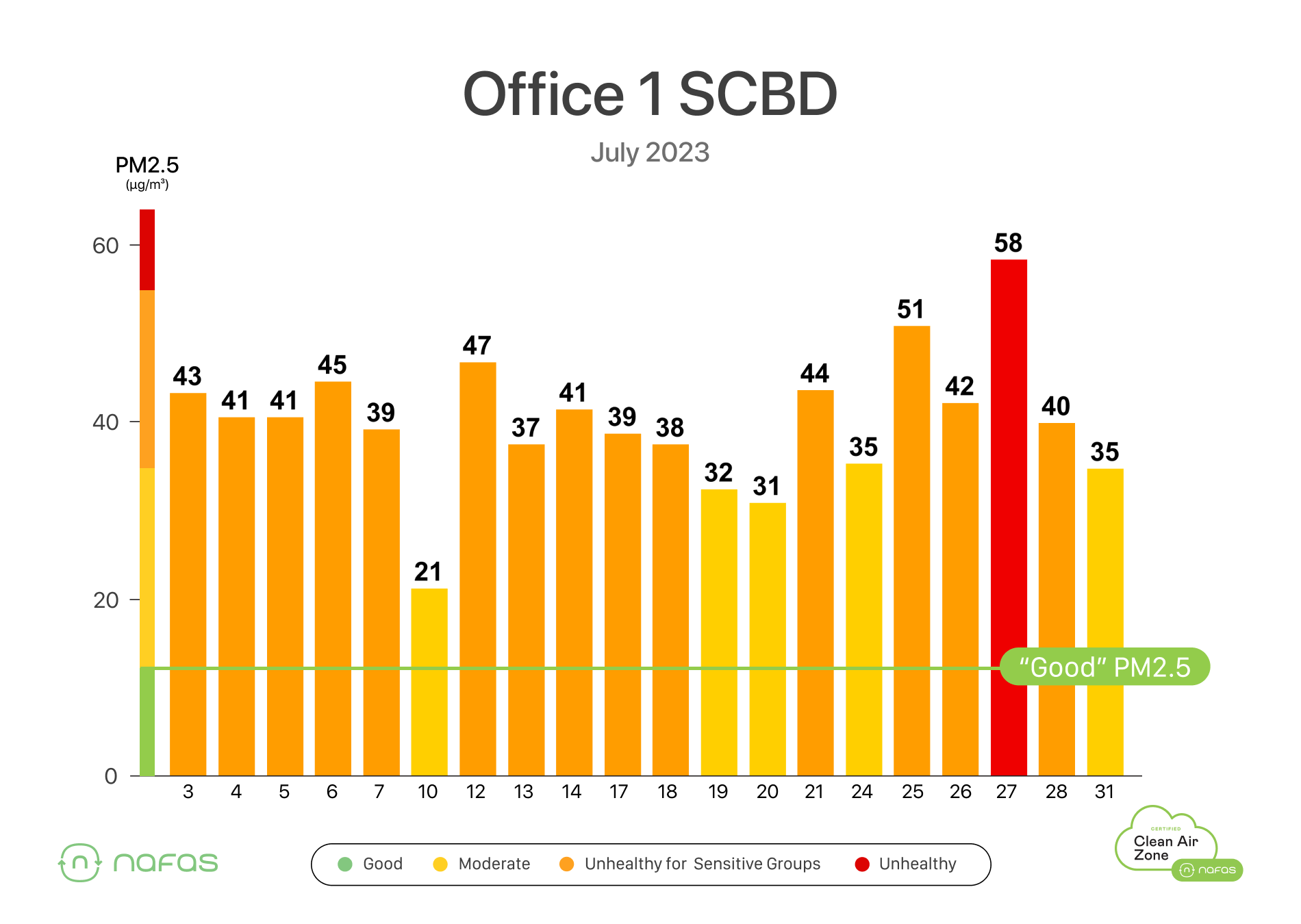
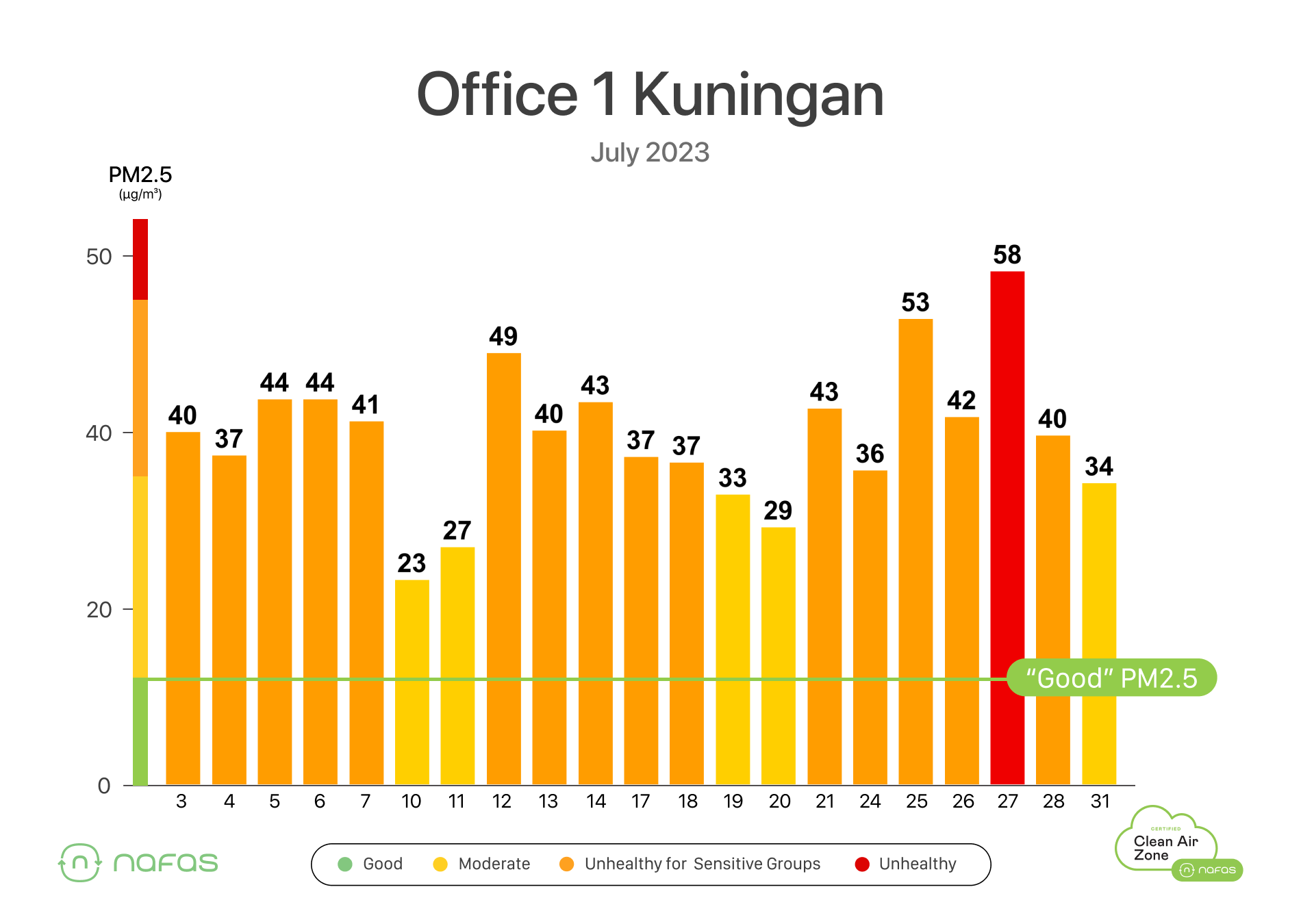
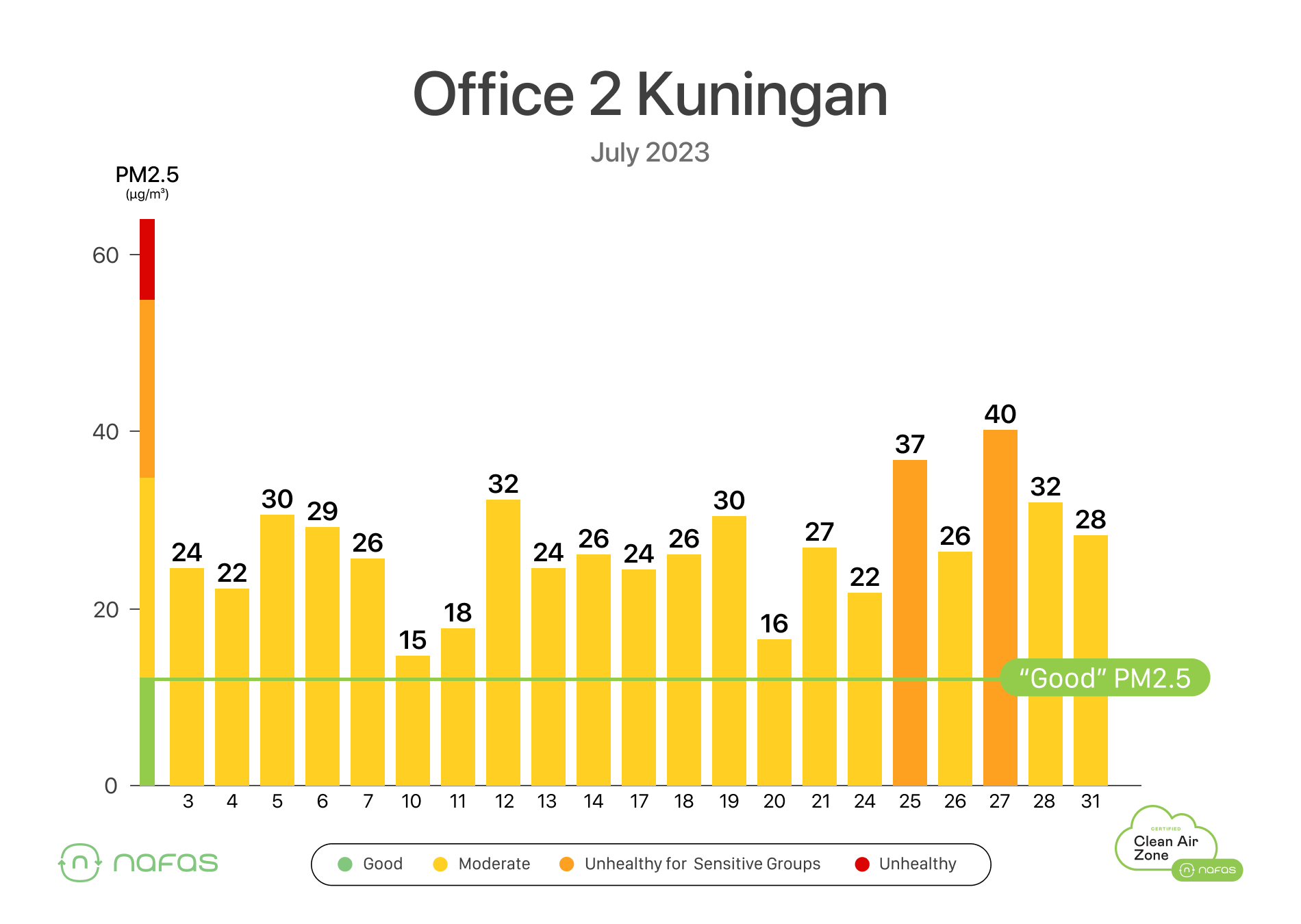
Why do we accept that the spaces we spend 30% of our working life in actually contribute to how sick, tired and unproductive we are?
Air pollution impacts employees cognitive performance and productivity
We recently highlighted the impact of air pollution on the office in our post “How indoor pollution impacts performance at the office” and the results weren’t great
Some key statistics that we highlighted:
1) Harvard COGFx Study: Employee performance declines on 80% of cognitive tasks when PM2.5 is above 12 µg/m3.
2) USC Productivity Study: Worker productivity declines 6% when PM2.5 levels increase by 10 µg/m3 above 15 µg/m3.
Let’s take a look at the first office from above from the perspective of both of these studies.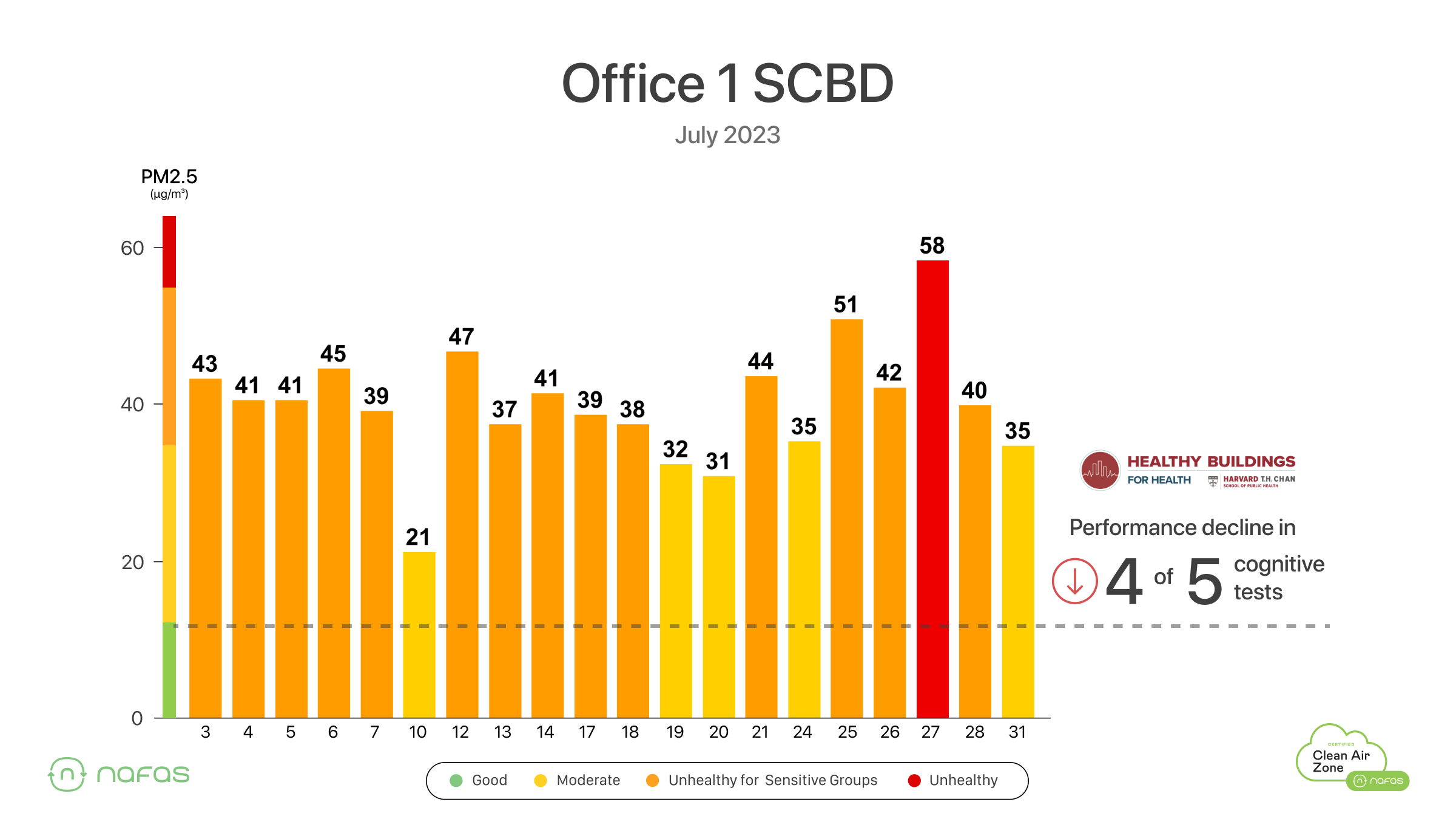
The working conditions in this office in July 2023 likely had an impact on the decision-making that happened among the people working there. It was never once below 12 µg/m3.
At the same time, general productivity in the same office was also probably impacted throughout the month of July 2023.
So let’s put things into perspective.
If you work in a 300-person office, and an employee comes into the office sick - the risk factor impacts whoever that employee interacts with.
But if you have 300 people working in an office with highly polluted air, the risk factor impacts ALL employees.
We talk about investing in the health of employees, and the first place to start is to make sure the office has healthy air quality.
Fixing air quality impacts ALL employees at the office
We strive to take care of our employees.
We provide benefits like flexible holidays, gym memberships, access to mental health applications and even foosball or ping pong tables.
The problem is, not everyone takes holidays, goes to the gym, uses the app or plays ping-pong.
But I can guarantee you that there’s one thing that everyone IS doing.
They are breathing the air in your office or the air at home (if they are WFH).
We have the tools to be able to take an office with bad air quality and turn it into a place that is healthy for everyone.
What does “fixed” air quality look like at the office. Let’s take a look at the same offices from above.
These 2 offices are actually in the same office building complex.
These 2 offices are right next to each other ON THE SAME FLOOR of the building.
Healthy Air As Part Of Your ESG Strategy = Double The Benefits
Sustainability ratings platform MSCI published a report called “ESG and Climate Trends To Watch 2023” at the beginning of the year, in which they very specifically highlighted that air pollution’s role in the health of our workforce cannot be understated.
They called this section “Choking on Smoke: The Human Capital Risks of Air Pollution” which highlights the risk factor of unhealthy air quality on the health and wellness of employees in offices in India.
The data in the chart below isn’t too far different from the air quality conditions in Jakarta in July 2023.
And below is the real condition of indoor air quality at several offices in Jakarta.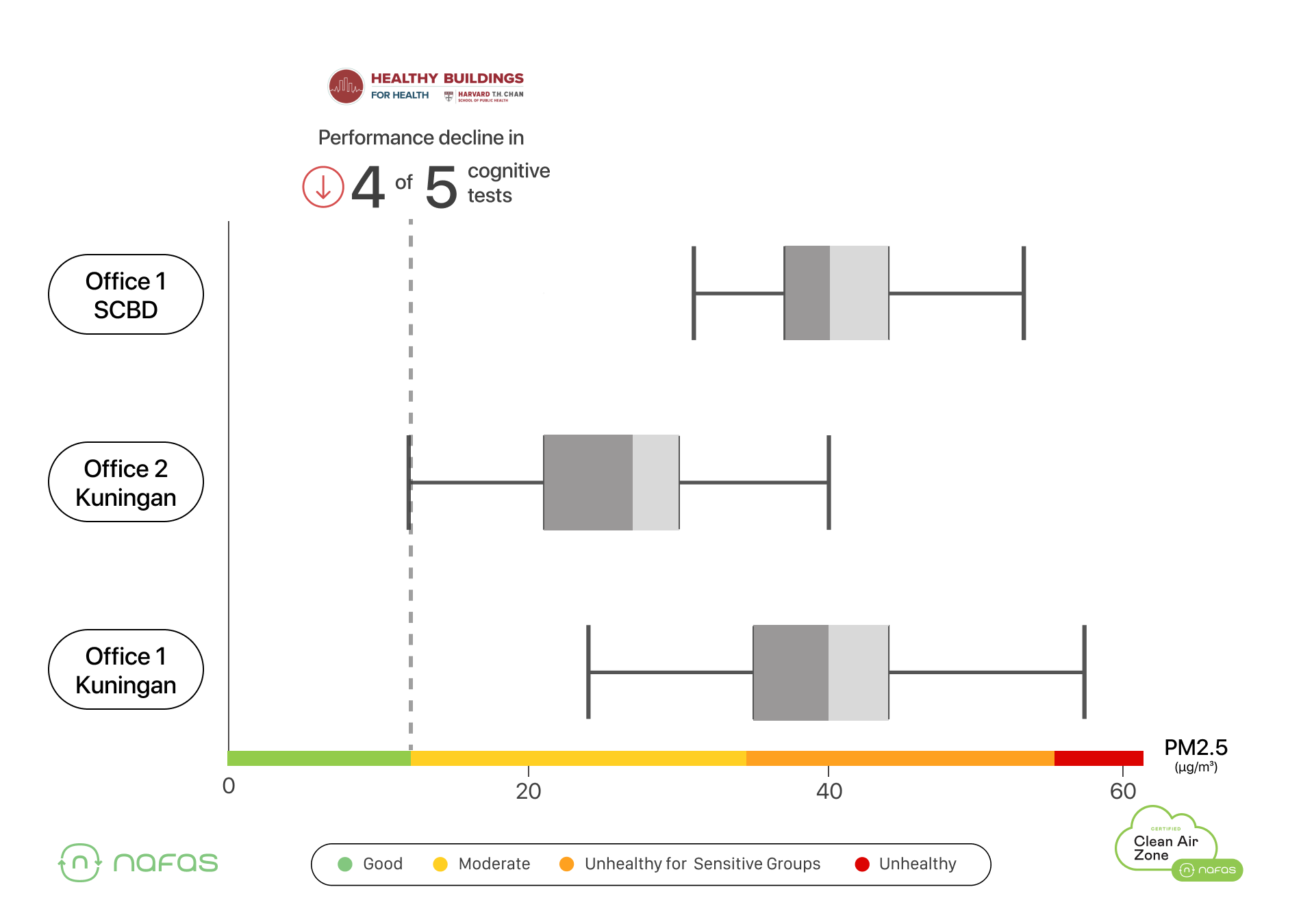
In addition to creating a healthy, productive environment for your employees, fixing air quality in the office improves your ESG and Sustainability ratings across almost all sustainability reporting platforms including TCFD, Sustainalytics, GRI, Moody’s, S&P500, and MSCI.
How does it work?
An unhealthy work environment falls under “Occupational Health & Safety” or OHS, which our friends in industries such as Oil & Gas, Mining, Agriculture, Shipping and Manufacturing know very well. In the context of those industries, a healthy work environment focuses on management of working conditions and reducing the risk of serious injury (or death).
Air pollution, especially PM2.5 pollution is a known health hazard and contributes to serious health issues. By improving the air quality in our office from “Unhealthy” to “Healthy” we are, in fact, improving occupational health and safety metrics.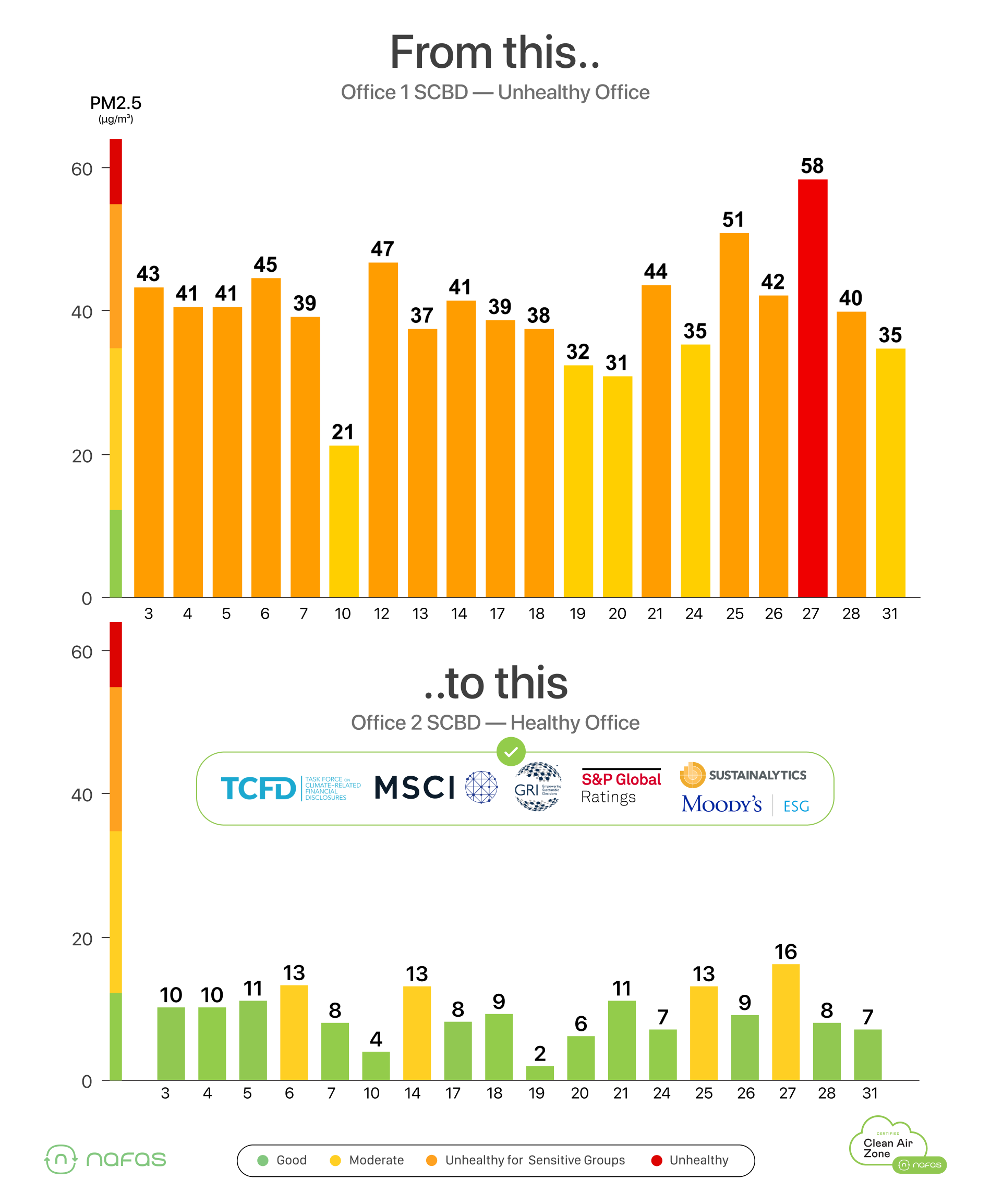
Going from Unhealthy to Healthy = Better ESG Performance
Nafas turned offices from Unhealthy to Healthy by deploying a subscription service called “Clean Air Zones” - a data-driven, fully automated ecosystem which ensures that indoor air quality is not just improved but maintained.
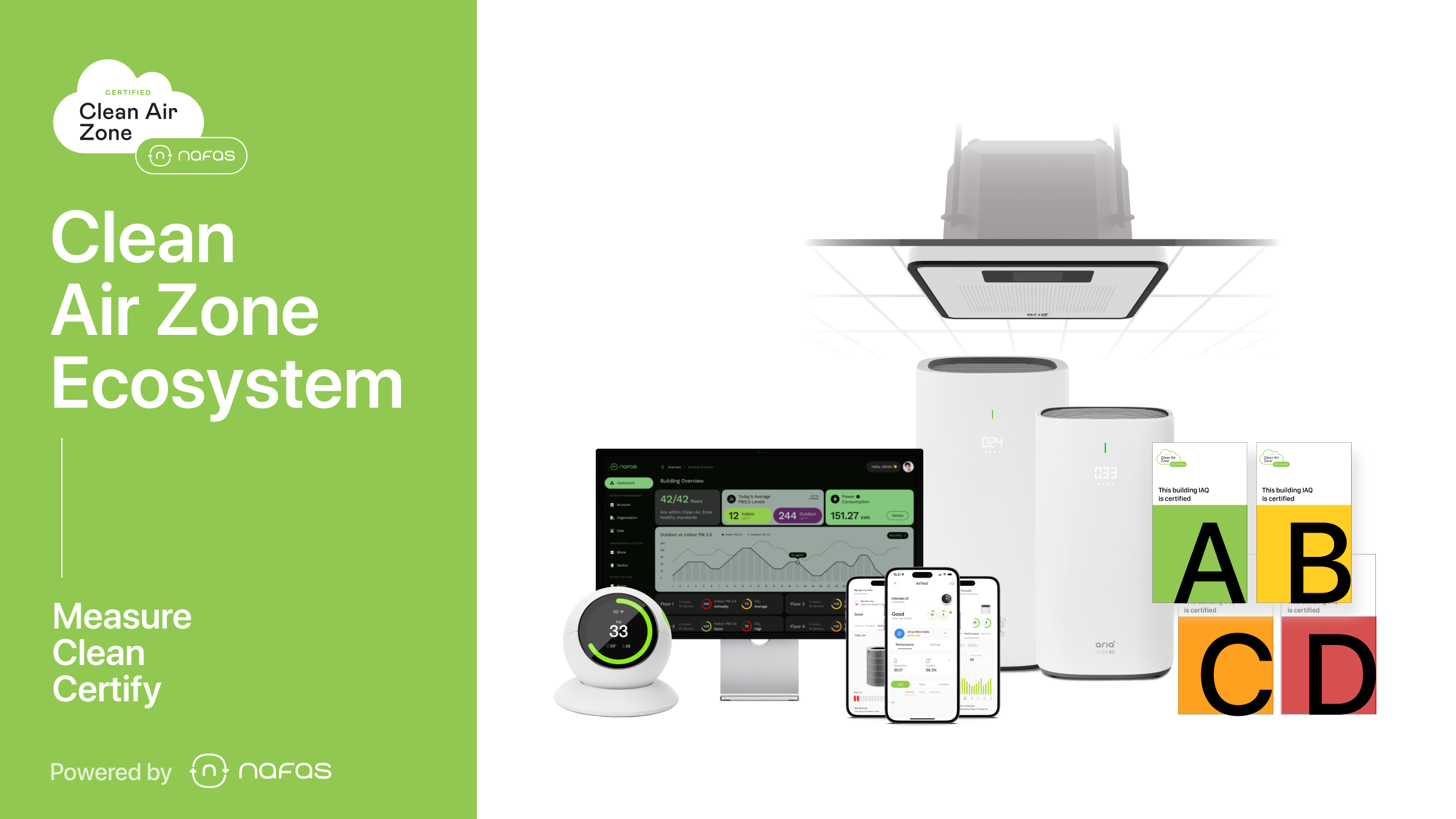
Clean Air Zones have already been implemented in offices, schools, gyms & yoga studios. Partnering with Nafas also includes various engagement and co-marketing activities centered around celebrating the healthy air that your business provides to its employees and customers.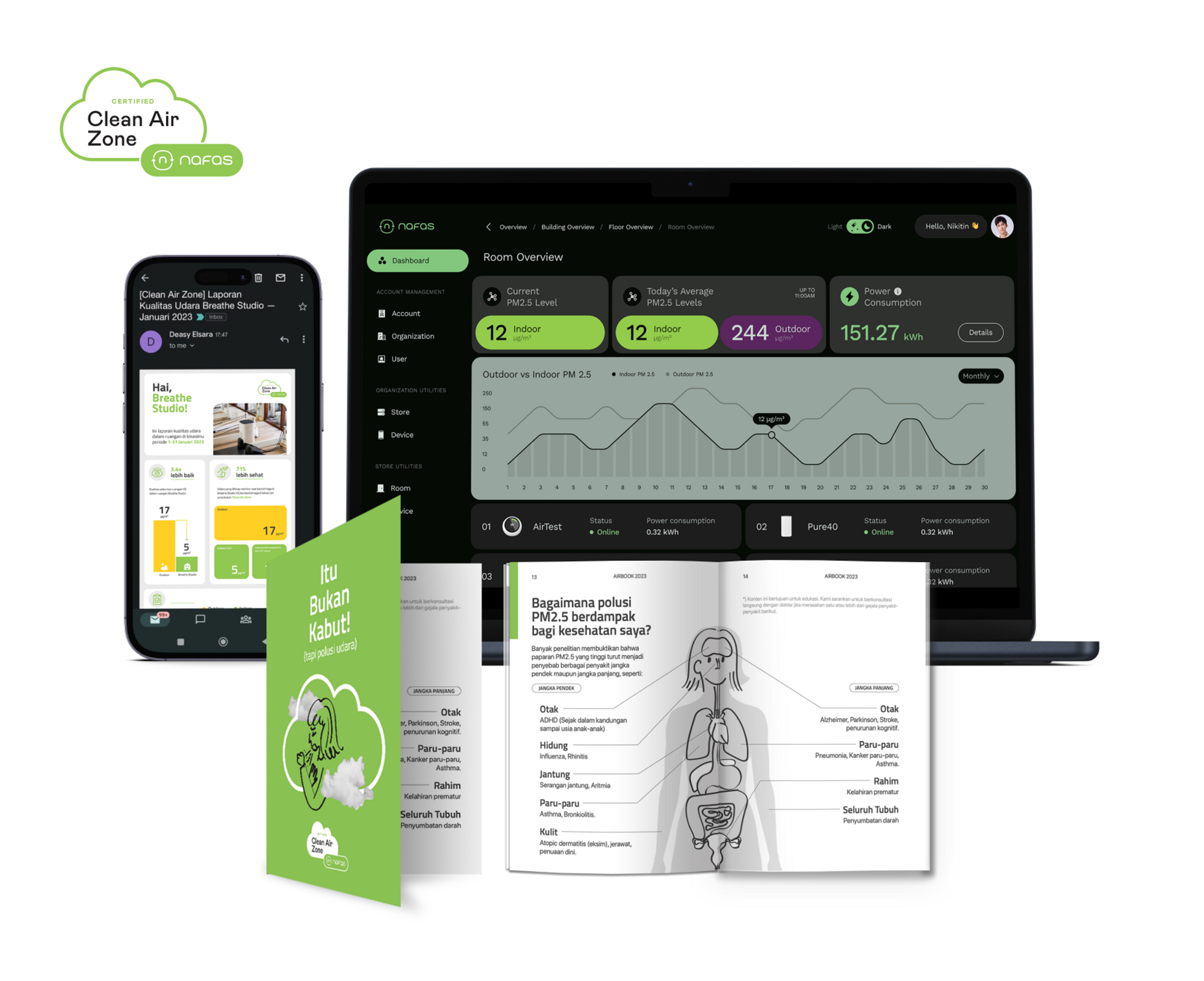
This is what we call - Udara Sehat Tanpa Mikir.
Leave the dirty air to us, and let Nafas help your business improve health, wellness and ESG Performance.
Becoming a Clean Air Zone is So Easy
Interested in ensuring healthy air quality in your office at all times? Feel free to contact us at [email protected] or click the link below. Let's join our mission to make clean air the standard in our offices!
